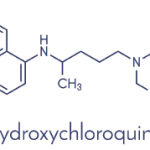“If the woman’s vitamin D level is low, she is at greater risk of adverse pregnancy outcomes,” Dr. Petri said. “However, if the vitamin D level is too high, she is at greater risk of adverse outcomes, as well.”
She recommends measuring vitamin D levels every trimester in a lupus pregnancy and making sure 25-hydroxy vitamin D levels are “in the sweet spot,” between 40 and 59 ng/mL.
Antiphospholipid Antibodies & Thrombosis Risk
Dr. Petri’s fourth pearl regarded the fact that antiphospholipid (aPL) antibody presence is intermittent in SLE, but thrombosis risk remains. “Get in the habit of checking aPL antibodies more than once so you will actually know which of your patients are hypercoagulable,” Dr. Petri said.
Patients with SLE are positive intermittently for aPL antibodies, often less than 25% of the time when serially checked.
The fifth pearl: Thrombosis in SLE occurs for many reasons. In the Hopkins SLE cohort, researchers demonstrated PC4d (i.e., platelet-bound complement split product or marker of platelet activation) is associated with risk of thrombosis.
Dr. Petri also highlighted a recent “earth-shattering” discovery made by her colleagues at Johns Hopkins. “Sixty percent of people with catastrophic antiphospholipid antibody syndrome (CAPS) have mutated complement control proteins,” she said.
A significant reduction in surface CR1 expression, a complement receptor, also occurs in CAPS. “Given [that] CAPS is a complementopathy, similar to atypical HUS [hemolytic uremic syndrome], treatment [for CAPS] should be an anti-complement therapy, like eculizumab,” she said.
“The next time you have a patient with CAPS in your ICU, what are you going to do that actually matters?” Dr. Petri asked. The answer: “Anti-complement therapy.”
Comorbidities & Glucocorticoids
The sixth pearl: Recognize that cardiovascular events occur early in SLE, even in the first two years after diagnosis. Prednisone itself increases the risk of cardiovascular events, especially at doses of 10 mg or more per day, Dr. Petri explained.
During the Q&A, Dr. Petri analogized HCQ whole blood levels as similar to a hemoglobin A1c, reflecting the amount taken over the past month.
Reducing prednisone was a central theme of the seventh take-home message. Dr. Petri said higher doses of prednisone are associated with an increased risk of organ damage in SLE, even after adjusting for confounding by indication.

